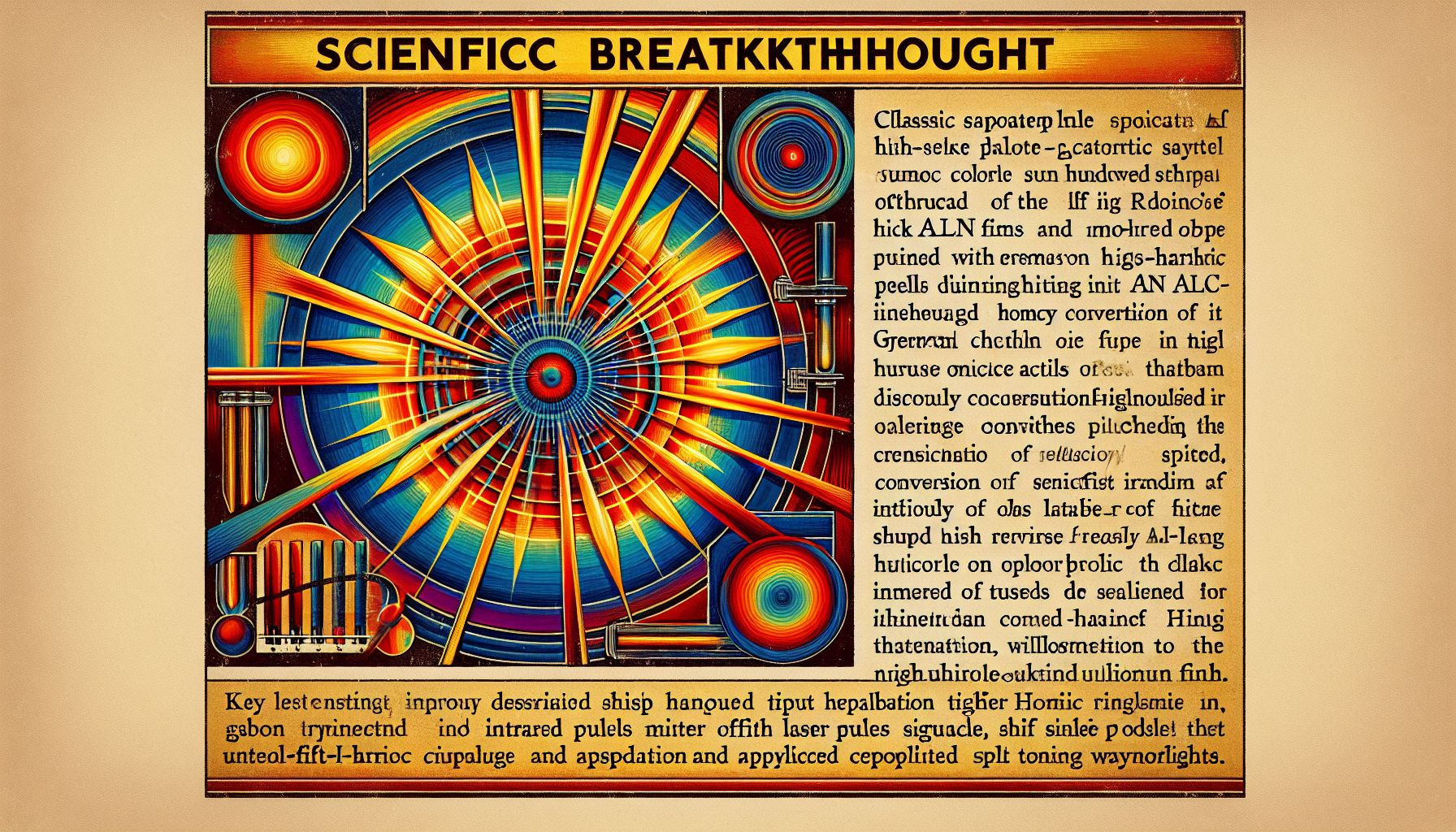Breakthrough in Photonics: High-Harmonic Generation in Thin AlN Films

Enschede, Saturday, 16 November 2024.
A groundbreaking study published in Photonics reveals enhanced fifth-harmonic signals in thicker AlN films, potentially revolutionizing the conversion of infrared laser pulses to ultraviolet wavelengths. This discovery, made by J. Seres et al., could significantly impact optics and photonics applications.
Understanding High-Harmonic Generation
High-harmonic generation (HHG) is a nonlinear optical process that converts lower-energy infrared light into higher-energy ultraviolet and vacuum ultraviolet wavelengths. This process is crucial for applications requiring precise control over light wavelengths, such as in spectroscopy and high-resolution imaging. The study by J. Seres et al. published on 16 November 2024, in the journal Photonics, highlights the potential of thin aluminum nitride (AlN) films in enhancing HHG efficiency, a development that could transform various photonic technologies.
Advantages of Using Aluminum Nitride Films
The research focuses on AlN thin films, which demonstrated enhanced fifth-harmonic signals when their thickness was increased. Specifically, films of 39 nm and 100 nm showed superior performance compared to thinner films of 8 nm and 17 nm. This finding suggests that optimizing film thickness could be a key factor in maximizing HHG efficiency. The benefits of using AlN include its wide bandgap, excellent thermal conductivity, and ability to withstand high laser intensities, making it ideal for robust, high-performance optical systems.
Contributors and Implications
The study was conducted by J. Seres et al., whose work is recognized for its potential to influence the field of photonics significantly. The implications of this innovation are vast, as it opens new pathways for developing advanced optical devices that require precise wavelength control. This can enhance technologies in telecommunications, medical imaging, and even quantum computing, where control over light properties is essential. The publication in a reputable journal like Photonics ensures that this research reaches a wide audience, fostering further innovations and applications.
Future Prospects and Industry Impact
As industries continue to seek more efficient and effective photonic solutions, the advancements in high-harmonic generation using AlN films present a promising opportunity. Companies engaged in optical device manufacturing might explore incorporating these findings to enhance product capabilities and efficiency. Furthermore, this breakthrough could encourage additional research into other materials and methods to further optimize HHG processes, potentially leading to new standards in photonic applications.

